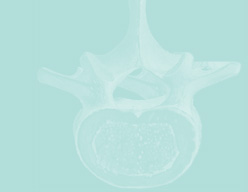page [1] [2] [3] [4] [5] [6] [7] [8]


The vast majority of back pain is due to nonspecific musculoskeletal spinal disorders. It is essential to distinguish patients with back pain due to nonspecific disorders from those with low back pain due to specific spinal diseases requiring urgent care (table 2). One should rely on the history and physical exam when developing a systematic clinical approach to treat low back pain. In dealing with the patient who presents with back pain one must have a heightened awareness of the more serious causes. While back pain is most commonly the result of musculoskeletal dysfunction, unfortunately it is also a manifestation of a systemic illness in over 60 diseases. In the geriatric patient, it is not unusual for concomitant illness to be present which may be a component of the patient's back pain.
Often the most valuable aspect of the exam is the history. In evaluating a patient with low back pain for underlying systemic disease, the most useful items are age, history of cancer, unexplained weight loss, duration of pain, and responsiveness to previous therapy. To categorize back pain, the following questions may be of assistance: Is there a systemic disease causing the pain? Is there neurologic compromise? Is the pain musculoskeletal in origin? Is there evidence of psychological factors exacerbating the pain?
It is good medical practice to provide a general physical examination to all patients with new-onset back pain. This should be a thorough exam of both the musculoskeletal and neurologic system including the basic elements of inspection, palpation, and observation.
Radiological examination of the patient with back pain has significant limitations due to the often asymptomatic evidence of long-term wear and tear. Certain findings in the medical history, physical examination, and laboratory tests are indications for imaging procedures of the spine (table 3). Radiographic findings must have a high degree of clinical correlation as conventional X-rays, computed tomography scan, and magnetic resonance imaging will routinely demonstrate structural abnormalities in the asymptomatic as well as the symptomatic patient. Abnormal radiographic findings in the patient with back pain may or may not be related to the patient's symptom. Anatomical abnormalities of the lumbar spine become more prevalent in the elderly, regardless of the symptoms. Osteoarthritic changes are more often asymptomatic than symptomatic.
| page [1] [2] [3] [4] [5] [6] [7] [8] >> next |